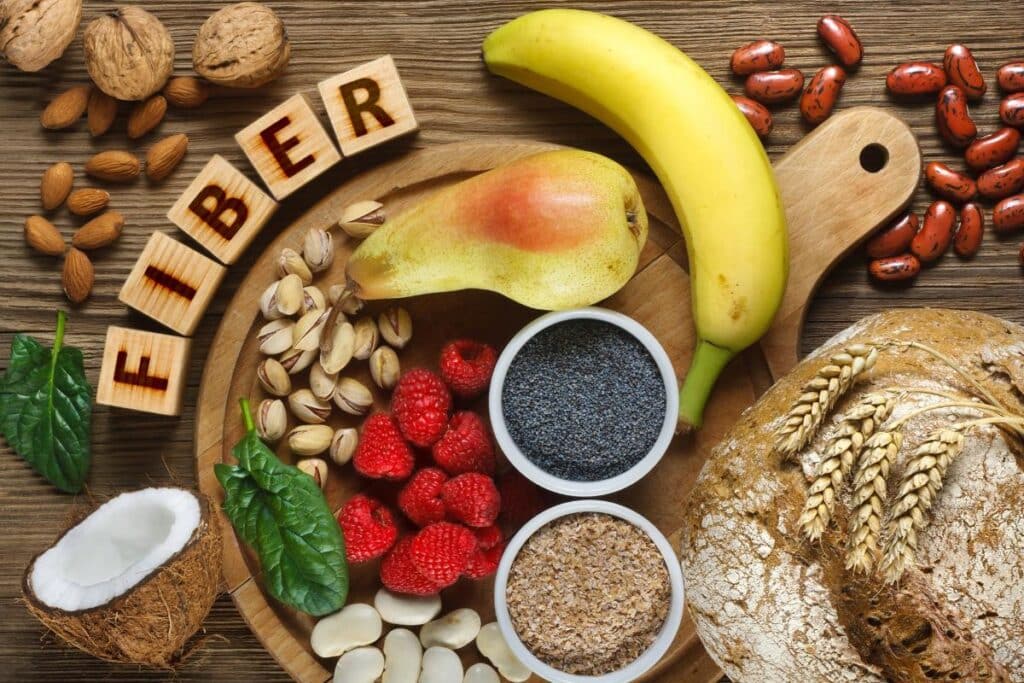As parents, ensuring that our kids eat more fiber is vital for their overall health and well-being. Fiber plays a crucial role in digestion, heart health, and can even impact mood and energy levels. This guide will explore how much fiber children need, its benefits, and practical ways to incorporate more fiber-rich foods into their diet.
Understanding Fiber and Its Importance
Fiber, found in plant-based foods, is essential for a healthy digestive system and offers numerous benefits. It helps regulate bowel movements, lowers cholesterol levels, and keeps blood sugar levels stable. For kids, fiber is fundamental for proper growth and development.
How Much Fiber Do Kids Need?
The recommended daily fiber intake for children varies by age and gender:
- Ages 1-3: About 14 grams of fiber per day.
- Ages 4-8: Girls need 16.8 grams, while boys require 19.6 grams per day.
- Ages 9-13: Girls should have 22.4 grams, and boys need 25.2 grams per day.
Servings of Vegetables and Fruits
To meet these fiber requirements, children should consume a variety of fruits and vegetables daily:
- Ages 1-3: 1 cup of fruit and 1 cup of vegetables.
- Ages 4-8: 1-1.5 cups of fruit and 1.5-2.5 cups of vegetables.
- Ages 9-13: 1.5-2 cups of fruit and 2.5-3 cups of vegetables.
Benefits of Fiber for Kids
- Digestive Health: Fiber helps prevent constipation and promotes a healthy digestive tract.
- Weight Management: High-fiber foods are more filling, which can prevent overeating and obesity.
- Blood Sugar Control: Fiber slows down the absorption of sugar, helping to control blood sugar levels.
- Heart Health: A high-fiber diet lowers the risk of heart disease later in life.
Tips to Get Kids to Eat More Fiber
- Start with Breakfast: Serve high-fiber cereals or whole-grain bread. Add fruits like berries or sliced bananas for an extra fiber boost.
- Snack Smart: Offer snacks like apple slices, carrots with hummus, or whole-grain crackers.
- Incorporate Veggies and Fruits: Add vegetables to dishes like pasta, pizza, or sandwiches. Serve fruits as desserts or in smoothies.
- Lead by Example: When kids see parents eating fiber-rich foods, they are more likely to follow suit.
- Make It Fun: Use cookie cutters for fruits and vegetables or create colorful fruit skewers to make fiber-rich foods more appealing.
Fiber-Rich Foods for Kids
- Whole Grains: Brown rice, oatmeal, whole-grain bread, and pasta.
- Legumes: Beans, lentils, and chickpeas.
- Fruits: Apples, pears, berries, oranges, and bananas.
- Vegetables: Broccoli, carrots, peas, and leafy greens.
Overcoming Challenges
Some kids may be resistant to trying new foods, especially high-fiber ones. Introduce new foods gradually, and don’t force them. Mixing familiar foods with new ones can make the transition smoother.
Monitoring Fiber Intake
While fiber is important, too much can lead to digestive discomfort. Keep a balance and increase fiber intake gradually. Ensure adequate water intake as fiber works best with sufficient hydration.
Conclusion
Encouraging kids to eat more fiber is a step towards a healthier future. By incorporating a variety of fiber-rich foods into their diet, educating them on the benefits, and making mealtime fun and engaging, parents can help their children develop healthy eating habits that last a lifetime.
Key Takeaways
- Children need 14-25.2 grams of fiber daily, depending on age and gender.
- Serve 1-3 cups of fruits and 1-3 cups of vegetables daily to meet fiber requirements.
- Fiber benefits kids by enhancing digestive health, aiding in weight management, controlling blood sugar, and promoting heart health.
- Introduce fiber-rich foods in a fun, engaging manner and lead by example to encourage kids to eat more fiber.





Thanks for this, mandatory reading.
Wow, amazing blog layout! How long have you been blogging for? you made blogging look easy. The overall look of your web site is magnificent, as well as the content!
Many years.